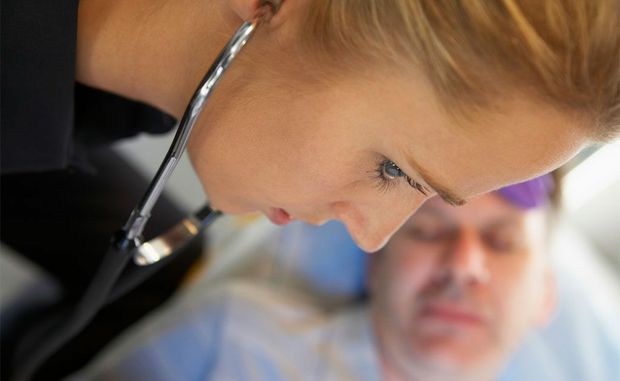
In research published in the Medical Journal of Australia Monday, University of Sydney Medical Education professor Merrilyn Walton said medical trainees were encouraged not to complain and to conform in the current medical training culture.
MORE needs to be done in the medical profession to stamp out sexual harassment, bullying and discrimination, which female medical trainees face, a professor says.
In research published in the Medical Journal of Australia Monday, University of Sydney Medical Education professor Merrilyn Walton said medical trainees were encouraged not to complain and to conform in the current medical training culture.
But she said changing policies and guidelines would not be enough to combat the problem. Changing the design of medical education itself was the only solution, Prof Walton said.
“Colleges need to have zero tolerance for harassment and discrimination,” she said.
MERRILYN Walton, professor of medical education at the University of Sydney, says attempts by medical colleges and peak bodies to change policies and guidelines in a bid to eradicate sexism aren’t working.
Female medical trainees are being subject to harassment and discrimination and the only way to change that is to change the people training them, she writes in the Medical Journal of Australia on Monday. Prof Walton says clinical supervisors don’t need to be accredited now and there’s no prerequisite learning or competencies that need to be demonstrated. But being a senior or experienced doctor doesn’t mean you’re fit to teach, and until that changes, the culture of sexual inequality won’t change, she says. The system was designed to discourage whistleblowers, encouraging students to conform and be complacent. “There are many out there who are in positions as supervisors who aren’t qualified, who aren’t committed, who aren’t interested and they’re acting as de facto barriers to females getting into the specialities that we need them in,” Prof Walton told AAP. The whole problem was that most trainees and medical students would never make a complaint because their careers depended on those supervisors for assessment reports which allow them to progress. “When I do talk to people about accreditation of supervisors I get a few blank stares because there’s just a belief system that if you’re a senior doctor that you are just naturally a good supervisor.” Prof Walton says token attention to grievance processes without removing teachers who behave badly will only reinforce the belief that nothing can or should change. Medical education needed to reflect the differences between the characteristics and learning styles of men and women. Women were often more cautious and worried about their inexperience while a man with the same experience would instead emphasise their skills, which led to men being given more opportunities. A lack of female role models and gender awareness left the number of Australian women surgeons at just 10 per cent, Prof Walton said. Of 23 medical specialities, women slightly dominate in two, while men dominate the remaining 21. BREAKDOWN OF SPECIALTIES BY GENDER * Surgery: men 90 pct, women 10 pct * Intensive care medicine: men 84 pct, women 16 pct * Occupational and environmental medicine: men 83 pct, women 17 pct * Ophthalmology: men 80 pct, women 20 pct * Sports and exercise medicine: men 78 pct, women 22 pct
